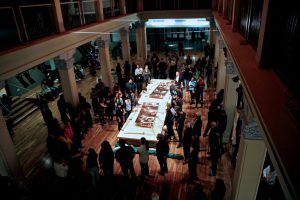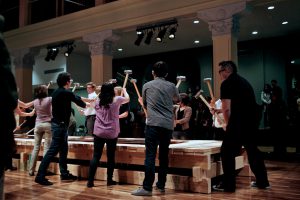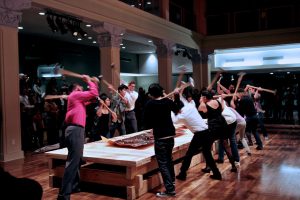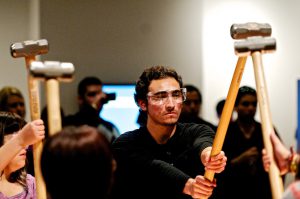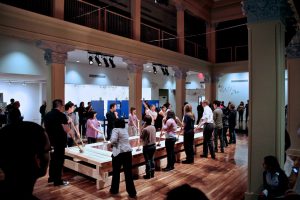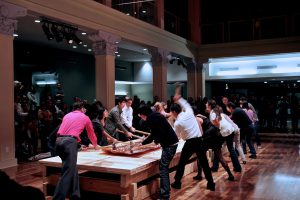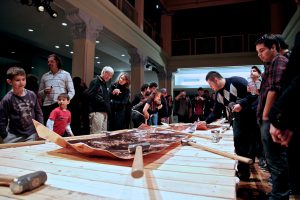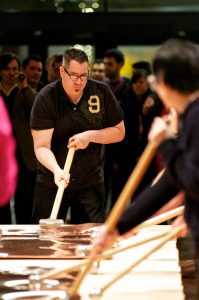Pulso Y Martillo
By eliminating the border between performers and art audiences, Pulso y Martillo engages the immigrant and artist communities simultaneously in order to initiate an act of audience re-construction, towards the inclusion of unacknowledged entities. The lively spectacle is unveiled through its duration and compositional elements: sound, motion, memory, form, and pulse.
The performers, mostly immigrant students, position themselves around a wooden platform and pound sledgehammers onto thick copper plates, producing new rhythms, meters, and voices.
The sound performance deals with a layering of memories, as it is through memory that one addresses the loss or distortion of the disappearing cultural traditional crafts in Mexico; in Pulso y Martillo, this loss and distortion is specifically related to the copper production ritual in Santa Clara Del Cobre, Michoacan. Some layers of the performance also address archetypes within each audience member’s personal experience–here related to immigrants, student and art communities, musical ritual, the history of craft, the history of the labor, its struggles, and exploitation. Essential to the work are also the symbolic memories triggered by individual moments when performers create gestures that are understood through the visual or sonic aesthetics, and those pre-metaphorical experiences generated by the audience’s visual experience in order to create a narrative.
Delivered in group choreography and individual gestures, Pulso y Martillo’s variations include full strong circular hammer strokes, hammer sweeps, hammer rests, bounce strokes, hammer brushes, and quiet pulses.
Claiming territory through the discovery and production of sound and sensation, vital immigrant participation is central to the inherent meaning of Pulso y Martillo.

